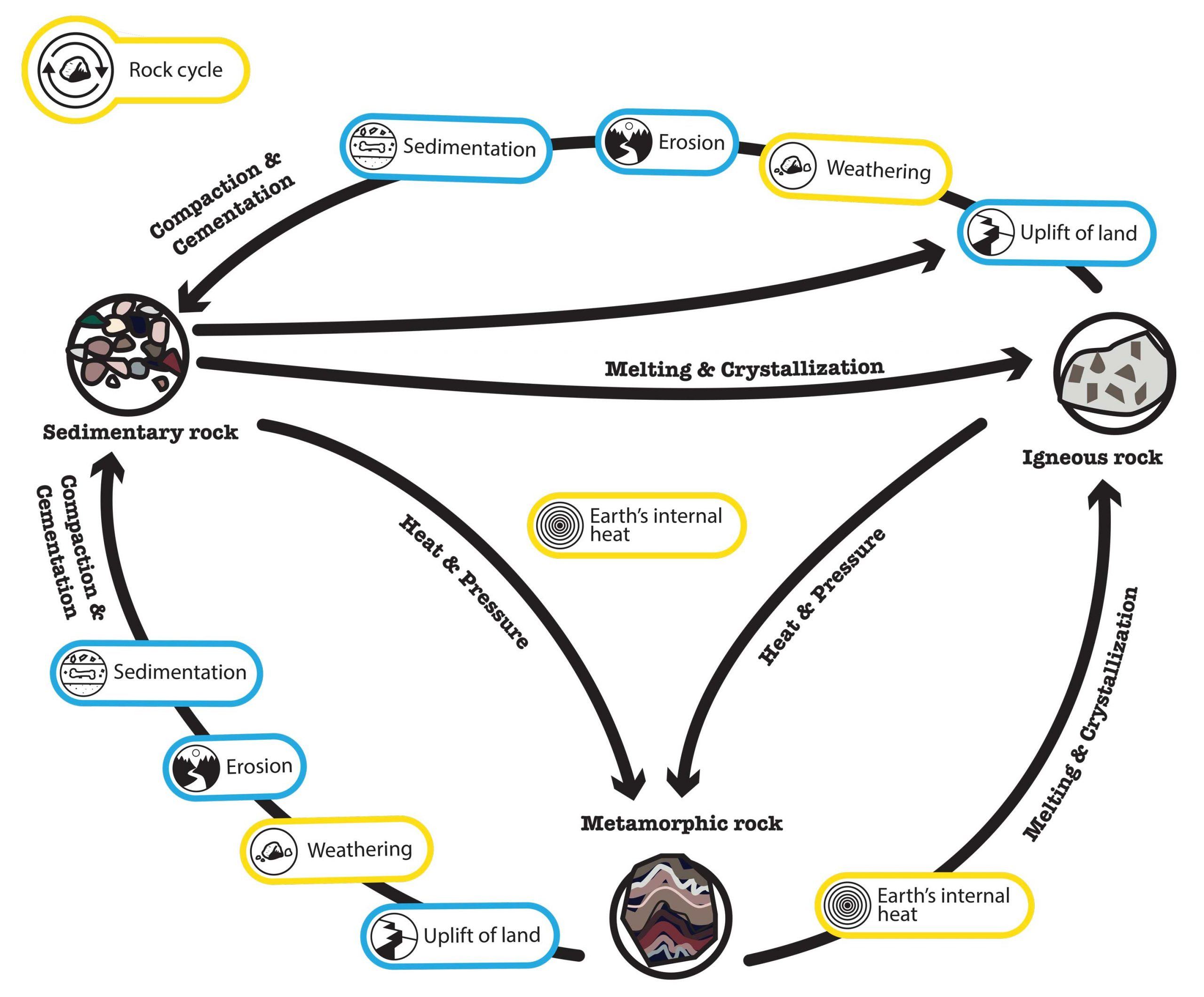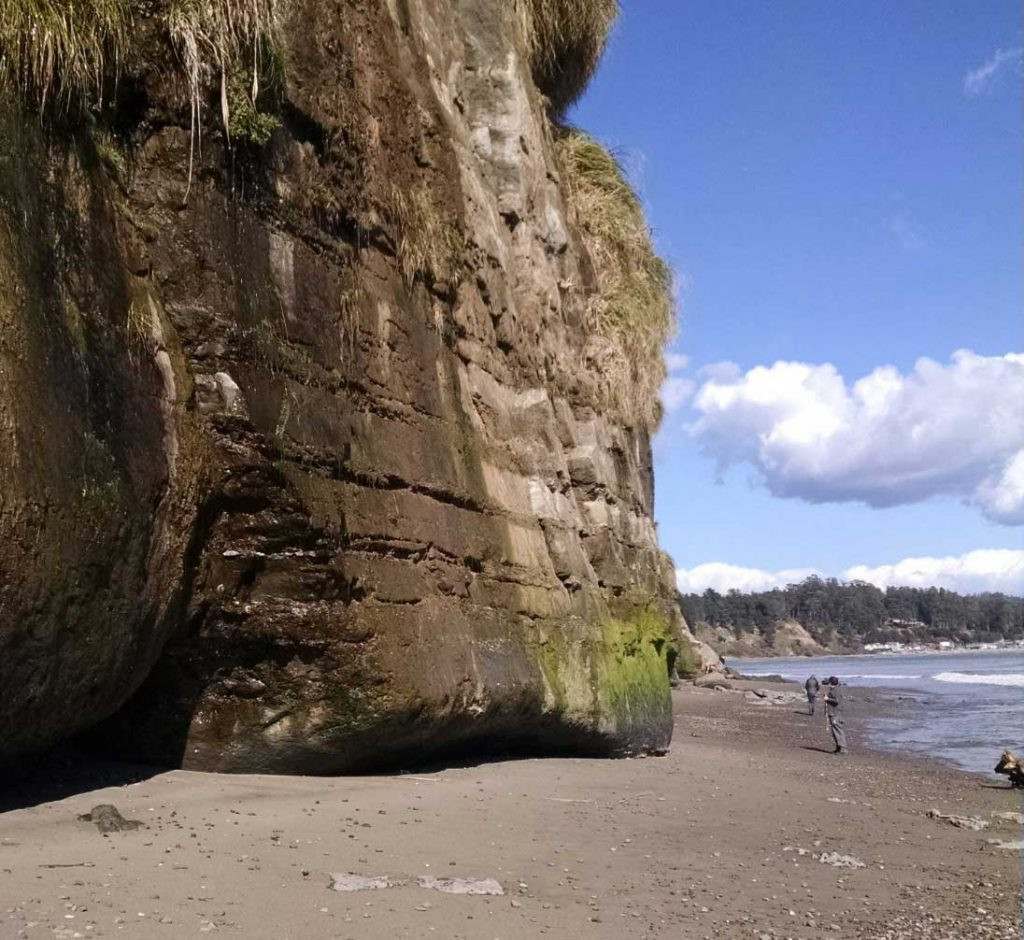Rocks are fundamental components of our planet, forming the landscapes we see and influencing countless natural processes. They are not static entities but are constantly changing through geological time. From the minerals they contain to the way they are formed, rocks tell a story of Earth’s dynamic history. Understanding how different types of rocks form and transform is key to grasping the Rock Cycle Definition, a concept that explains these ongoing changes.
The rock cycle is a series of processes that create and transform the types of rocks in Earth’s crust. These rock types are broadly classified into three main categories: igneous, sedimentary, and metamorphic. Each type originates under specific conditions and can be transformed into another type through various geological forces. This continuous transformation is what we define as the rock cycle.
 Igneous and metamorphic rock examples
Igneous and metamorphic rock examples
Decoding the Rock Cycle Definition: A Continuous Process
At its core, the rock cycle definition describes how Earth’s rocks are recycled over millions of years. It’s a dynamic system, powered by the planet’s internal heat and external forces like water and wind. Imagine it as a giant, slow-moving conveyor belt where rocks are constantly being created, altered, and reformed.
The journey through the rock cycle can begin with magma, molten rock found beneath the Earth’s surface. When this magma cools and solidifies, it forms igneous rocks. These are the rocks born from fire, and they make up a significant portion of the Earth’s crust. Examples include granite, which cools slowly underground, and basalt, which cools rapidly after volcanic eruptions.
 Igneous and metamorphic rock examples
Igneous and metamorphic rock examples
Once igneous rocks are exposed at the Earth’s surface, they are subjected to weathering and erosion. Weathering breaks down rocks into smaller pieces, and erosion transports these sediments away. These sediments, carried by wind, water, and ice, eventually settle and accumulate in layers. Over time, the pressure from overlying layers compacts these sediments, and minerals precipitate to cement them together, forming sedimentary rocks. Sandstone, shale, and limestone are common examples of sedimentary rocks, often found along coastlines and riverbeds.
 Sedimentary rock formations along the California coast
Sedimentary rock formations along the California coast
If sedimentary or igneous rocks are buried deep within the Earth, they experience intense heat and pressure. These extreme conditions cause the original rocks to transform into metamorphic rocks. The rocks don’t melt, but their mineral composition and texture change significantly. Marble, slate, and gneiss are examples of metamorphic rocks, each with unique characteristics formed under different levels of heat and pressure.
Metamorphic rocks, like other rock types, can also be uplifted to the surface, where they too undergo weathering and erosion. Alternatively, if metamorphic rocks are subjected to even greater heat and pressure, they can melt back into magma, restarting the cycle anew.
Factors Influencing the Rock Cycle
Several Earth system processes significantly influence the rock cycle:
- Earth’s Internal Heat and Pressure: Drives melting and metamorphism, forming igneous and metamorphic rocks.
- Tectonic Uplift: Exposes rocks to weathering and erosion, leading to sediment formation.
- Weathering and Erosion Rates: Influenced by climate, temperature, precipitation, and even biological activity like plant growth, breaking down rocks and producing sediments.
- Sedimentation Processes: Water bodies (rivers, oceans) determine where sediments are deposited, affecting the formation of sedimentary rocks.
- Human Activities: Extraction of resources, urbanization, and land use changes can accelerate erosion, alter sedimentation patterns, and impact the rock cycle.
Understanding the rock cycle definition is crucial for comprehending Earth’s geological history and the interconnectedness of its systems. It highlights the constant change and recycling of materials that shape our planet, influenced by both natural forces and human actions.
